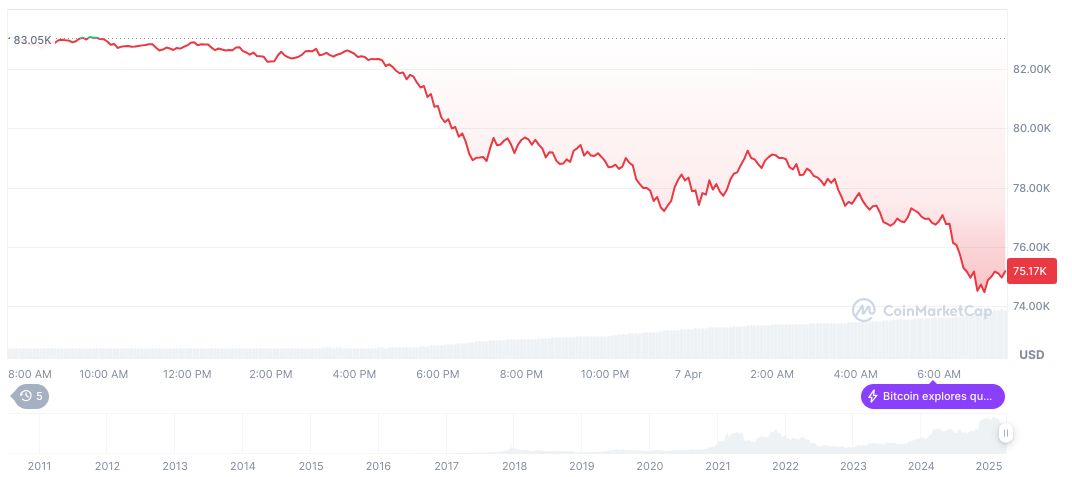- Federal Reserve’s policy causes market shifts in Bitcoin and Ethereum.
- Bitcoin drops 10% to $74,000 amidst uncertainty.
- Market volatility raises risk of Ethereum liquidations.
Federal Reserve Governor Randal Quarles declared on April 7, 2025, that the new tariff policy would significantly impact markets, as evidenced by early signs of price increases.
The new tariffs are raising inflationary pressures and causing uncertainty in global markets, including the cryptocurrency space.
Cryptocurrency Markets Hit as Bitcoin Drops to $74,000
The recent tariffs announced by the Federal Reserve have fueled market uncertainty, as highlighted by Governor Quarles. Since the announcement, global economic players have been adjusting to these changes, particularly in the cryptocurrency sector.
Bitcoin has seen a notable drop to $74,000, while Ethereum has faced liquidity issues, with potential liquidations at prices below $1,000. This shift signals the market’s cautious stance following the Fed’s policy. Randal Quarles, Former Vice Chair for Supervision, Federal Reserve, noted, “Quarles has historically cautioned against the simultaneous tightening of monetary policy and balance sheet adjustments amid inflationary pressures caused by external shocks like tariffs.”
Cryptocurrency markets, particularly Bitcoin and Ethereum, have shown significant reactions with increased inflows to exchanges, highlighting market participants’ readiness to adjust positions due to the policy changes.
Tariff Impact: Increased Volatility and Liquidity Concerns for Ethereum
Did you know? The last major tariff policy under the Trump administration led to similar widespread market shocks, influencing inflation patterns and economic stability.
As of April 7, 2025, Bitcoin trades at $78,943.25 with a market cap exceeding $1.57 trillion. Recent declines show a 4.60% drop over seven days, while trading volumes increased 292%, reflecting heightened market activity. [Data: CoinMarketCap]

According to Coincu research, the current tariff policy could drive a longer-term shift in market dynamics, potentially affecting digital asset liquidity and valuation. Analysts emphasize the need for sustained monitoring of these developments for any regulatory implications.























